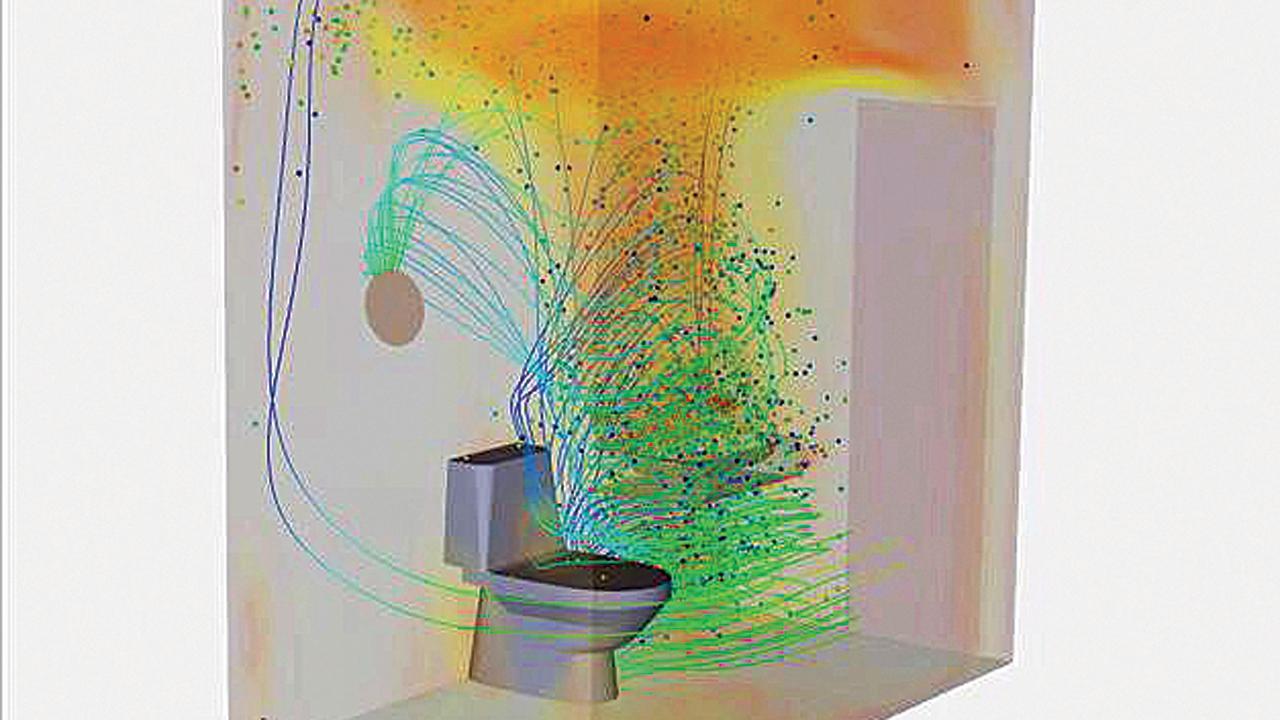Developed by researchers, it can study airflow inside enclosed spaces, suggest changes to ensure ventilation

The researchers used their knowledge regarding airflow around aircraft and engines to tailor the airflow within indoor spaces
In an effort to help fight the pandemic better, a study by researchers from the Indian Institute of Technology Bombay (IIT-B) provides an innovative solution to ensure proper ventilation in enclosed spaces so that spread of the COVID-19 virus can be avoided. The team has developed a computer simulator, which can study airflow inside enclosed premises and recommend changes to ensure safe ventilation.
ADVERTISEMENT
The researchers used their knowledge regarding airflow around aircraft and engines to tailor the airflow within indoor spaces. They studied the ventilation of a shared washroom, where the use of water can be a major source of aerosol, which carries the virus.
Ventilation rearrangements
Explaining the procedure, Professor Krishnendu Sinha from Aerospace Engineering Department of IIT-B, said, “When aerosol comes out of a person’s mouth, it mixes with the air of a room. The question is how do you ensure that it does not infect others breathing the same air. Usually there are ducts and exhaust fans to ensure air circulation. Yet there are some dead-zones where the air remains stagnant for a long time and some points where it takes longer for the air to move. The computer simulation helps to identify such areas in a room based on which ventilation rearrangements can be recommended.”
 Professor Krishnendu Sinha from the Aerospace Engineering Department of IIT-B
Professor Krishnendu Sinha from the Aerospace Engineering Department of IIT-B
Explaining it further, he said, “The model or design of the room is fed to the computer simulator. The software then studies the room and its existing ventilation system by measuring the dimensions and the placements of fans, exhaust fans, doors, windows among all. Once the airflow in that particular room is studied, dead-zones can be identified or places where the air is getting trapped for longer. Based on this, recommendations can be made on where to place exhaust fans, which side requires more ventilation, how the air-duct for an AC should spread across the room, what should be the power of air flow among all.”
Their study has featured in the Physics of Fluids journal, published by the American Institute of Physics. The researchers have found out that chances of infection are significantly higher in a dead-zone. “Surprisingly, they can be near a door or window, or right next to where an AC is blowing in air. You might think that these are safe zones, but they are not,” added Prof. Sinha.
Trapped in dead zones
Adding to this, one of the co-authors, Vivek Kumar said, “Ideally, air should be continuously removed from every part of the room and replaced by fresh air. This isn’t easy to do when air is trapped in a dead-zone.”
Prof. Sinha further said, “Currently, ventilation design is often based on air changes per hour (ACH). These design calculations assume fresh air reaches every corner of the room uniformly. The ACH is not the same for all parts of the room. It can be 10 times lower for dead-zones. To make ventilation systems more effective against the virus, we need to place ducts and fans based on the air circulation within the room. Blindly increasing the volume of air through existing ducts will not solve the problem.” The team’s computer simulation is already being used in classrooms at IIT-B to ensure safe ventilation.
 Subscribe today by clicking the link and stay updated with the latest news!" Click here!
Subscribe today by clicking the link and stay updated with the latest news!" Click here!







